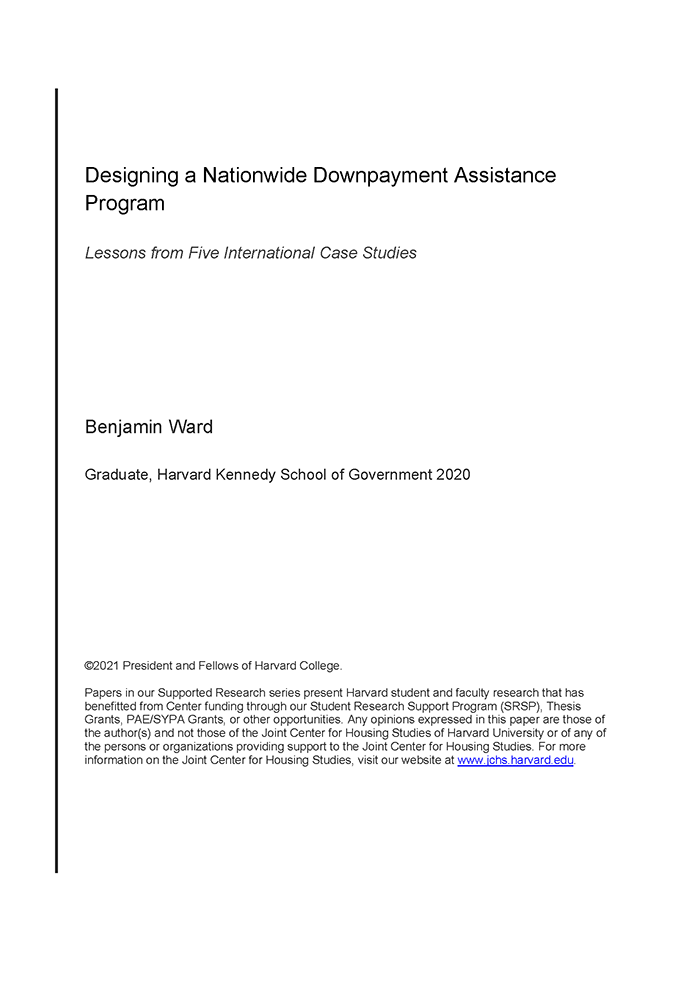Designing a Nationwide Downpayment Assistance Program
In this paper, Benjamin Ward makes a set of recommendations intended to help policymakers design a scalable nation-wide downpayment assistance program in the United States. Specifically, the paper focuses on improvements to the downpayment tax credit that President Biden announced as part of his presidential campaign. To achieve this, it examines the examples of national downpayment assistance programs in five international jurisdictions (Ireland, England, Canada, Australia, and New Zealand), analyzing the successes and failures of each of these programs and drawing lessons for policymakers in the United States. Ward extracts from these international examples a synthesized list of ‘design choices’ that policymakers must consider as they design a downpayment assistance program in the US.
The key insight of this paper is that policymakers face a design challenge: in order to increase the rate of homeownership, downpayment assistance should only flow to those who would not have achieved homeownership without it. A downpayment assistance program should be designed to target these individuals. While this seems blatantly obvious, an examination of the international case studies shows that in many instances, assistance was provided to homebuyers who would have achieved homeownership without any help. In these cases, government funds may have actually worsened housing affordability by inflating demand and driving prices higher.

